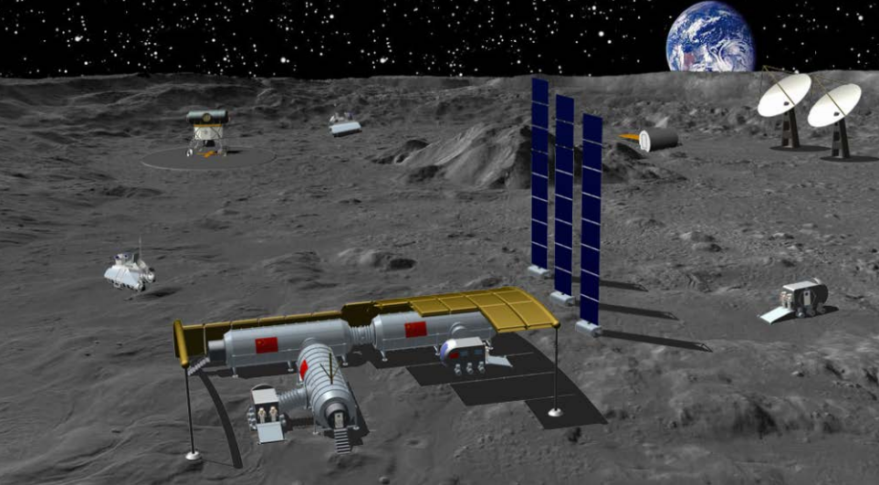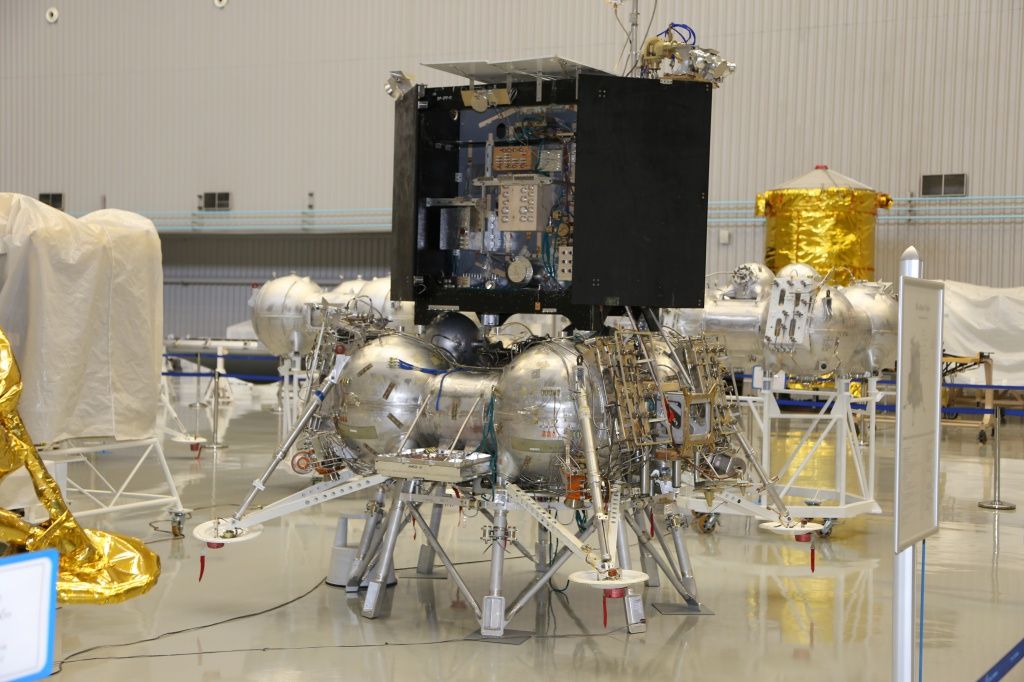Russian space chief Dmitry Rogozin recently said that Moscow and Beijing were very close to signing the agreement on creating the joint Lunar Station.
Chinese Taikonaut ‘Apes’ ISS Astronaut At Space Station; Makes Strikingly Similar Video On Life In Space — Watch
“We are now almost ready to sign an intergovernmental agreement on creating a lunar research base with China,” Rogozin said in an interview with the state-owned Rossiya 24 TV channel.
As EurAsian Times has reported earlier, China and Russia are leading the opposition to the US-led space block, called the Artemis Accords, consisting of 19 countries, which aims to send a manned mission to the Moon by 2025 and establish a governing framework for exploring and mining for natural resources, on Moon, Mars, and beyond.
The mission intends to build a research station on the Moon’s south pole with a supporting research station orbiting the Moon, called the Lunar Gateway.
As part of that program, an uncrewed mission to Moon, Artemis 1, is planned to be launched as early as July 2022.

China and Russia are promoting their own International Lunar Research Station (ILRS) as an alternative to the US-led Artemis program.
This joint Sino-Russian mission aims to build a Moon base and install a space station in the lunar orbit. The station is planned to be a state-of-art experimental research facility created on the surface or in the orbit of the Moon.
Roadmap For International Lunar Research Station
Last June, Roscosmos and China National Space Administration (CNSA) presented a roadmap for the ILRS during the Global Space Exploration Conference (GLEX 2021).
According to the roadmap, divided into three phases, five facilities and nine modules are planned for the station to support long and short missions to the Moon’s surface and orbit. The construction of the station is expected to be completed by 2035.
These facilities include a CisLunar Transport Facility to support round-trip transfer between Earth and the Moon, lunar orbiting, soft landing, a take-off on the lunar surface, and re-entry to Earth.

On the surface, a long-term support facility will feature a command center, energy and supply modules, and thermal management. The lunar transport and operation facility will help modules move the surface and support excavation or sampling.
The other two are the lunar scientific facility for in-orbit and surface experiments and the ground support and application facility.
As for the modules, the designs reportedly include a “hopping robot” and smart mini-rovers that would move around the Moon’s surface.
First Phase Of ILRS Construction
The station is planned to be built in three phases, with the first phase involving six missions, including China’s Chang’e-4, 6, and 7 missions and Russia’s Luna 25, 26, and 27. The first phase involves gathering data and verifying high-precision soft-landings which is supposed to last till 2025.
The Chang’e-4 (CE-4) mission delivered a landing platform and a rover named Yutu-2 to the Moon’s far side in January 2019, marking the first soft landing on the far side of the Moon by any country.
Yutu-2 landed in Von Kármán crater, in the Moon’s South Pole-Aitken basin, in January 2019. The CE-4’s purpose is to explore the area’s geology. The CE-6 and CE-7 are expected to be launched around 2025.

The CE-6 is supposed to bring back to Earth lunar samples with a mass of up to 2 kilograms, and CE-7 will be tasked with landing on the lunar South Pole and detecting local natural resources.
CE-7 is comprised of five separate spacecraft, namely an orbiter, lander, rover, hopping probe, and a polar relay satellite.
Meanwhile, Russia also plans to launch its Luna-25 mission in August 2022, thereby reactivating the Soviet-era series of robotic lunar missions that ended decades ago. The last in the series was Luna 24, which sent about 6 ounces (170 grams) of moon material back to Earth in 1976.
The Luna-25 moon probe will launch atop a Soyuz-2.1b rocket with a Fregat upper stage from the Vostochny spaceport in the far eastern region of Amur. The probe’s primary destination for landing is the Moon’s South Polar region, specifically, a spot north of the Boguslavsky Crater.
According to Russia’s rocket design bureau, NPO Lavochkin has constructed the Luna 25’s lander. There are three main tasks for this mission: to develop soft-landing technology; study the internal structure and exploration of natural resources, including water, in the circumpolar region of the Moon; and investigate the effects of cosmic rays and electromagnetic radiation on the Moon’s surface.

In addition, Luna 25 is also supposed to use a suite of sensors onboard to study the lunar topside and dust particles in the Moon’s exosphere.
Luna 25 also had a camera called Pilot-D, a demonstrator terrain relative navigation system, developed by the European Space Agency (ESA). However, following Russia’s invasion of Ukraine, ESA announced its decision in April to discontinue cooperation on Russia’s Luna series of robotic moon missions. Now Pilot-D will not be a part of the Luna 25 mission.
While the Luna 26 and Luna 27, which were earlier scheduled to launch in 2024 and 2025, respectively, will also be postponed, announced chief of Roscosmos, Dmitry Rogozin, shortly after ESA discontinued its cooperation.
Second And Third Phases Of ILRS
Following the completion of the first phase in 2025, which may get delayed considering the possible postponement of Luna 26 and Luna 27, phase two called the ‘construction’ phase, will begin in 2026, and this is supposed to go on till 2035.
The construction phase will be divided into two sub-stages, the initial one from 2026 to 2030, which will involve technology verification, sample return, massive cargo delivery, and the start of joint operations. Two missions are planned during this period, the Chinese CE-8 and the Russian Luna-28.
Stage two of the second phase will take place from 2030 to 2035 and involve completing the in-orbit and lunar surface infrastructure for energy, communication, actual resource utilization, and other technologies.
Five joint missions are planned for this sub-stage, named ILRS-1 through 5 and Russian super heavy-lift launch vehicles are listed to launch the mission.
Phase three will see the start of crewed landings after 2036, when the ILRS has been mostly completed and humans can conduct research and exploration.
Meanwhile, China and Russia are looking to add more nations to ILRS and there have been reports of negotiations with the ESA, Thailand, the UAE, and Saudi Arabia. However, as the ESA has backed out of Russia’s Luna series of moon missions over the Ukraine war, the project will probably be much less appealing to other nations.
- Written by Tanmay Kadam/EurAsian Times Desk
- Contact the author at etdesk@eurasiantimes.com
- Follow EurAsian Times on Google News





